The Battle of Midway Roundtable Opening Remarks

Welcome to the October 2021 issue of the Battle of Midway RoundTable Newsletter. This month we continue the discussion on a few topics including arming the bomb on the SBD, more on Devastators in the Battle of Midway and a very nice article on Howard Ady Jr. who first made contact with the Japanese Carrier fleet.
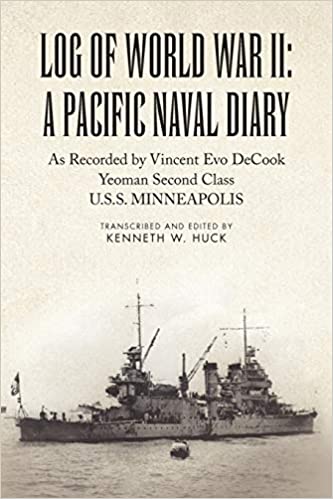
One of the interesting things about history, at least to me, is reading accounts of the average combatant or in our case sailor or airman that took part in the battle. One book published was a compilation of a diary. The book is called Log of World War II: A Pacific Naval Diary. Vincent Evo DeCook was a Yeoman Second Class on the USS Minneapolis. He recorded in his diary the first year of the war up until September 30th, 1942. Minneapolis was involved in action nearly the entire time including both the Battle of Coral Sea and Midway as well as the invasion of Guadalcanal. The book was written using his diary entries but unfortunately after Vincent had passed away. So a few things he jotted down are not known to us now but might have been cleared up if he was alive when the book was written.
At any rate the book has information as known to the author at the time. Some of it was accurate and some was just speculation or scuttlebutt. But it is what the sailor at the time knew and so he wrote it down.
He writes down what he knew during the action at Coral Sea and Midway in his entries and it is just interesting reading. You get a feeling of the time and place but without the wealth of information on the battles we have now. It was just a sailor writing down what he found out through the grapevine.
A lot of the book includes quite a bit of other items published at the time such as the President's May 1942 speech. Most of it you can find elsewhere I'm sure but it's a nice touch to put his diary in perspective of what was happening at the time. May be something other members might enjoy as I do. If it peaks your interest the book is currently available on Amazon.
So sit back and enjoy the newsletter.
ARMING THE BOMB ON THE SBD
Ed. note: The following is Part 2 of Brock Howe’s inquiry in August about the SBD Dauntless. Part 1 in last month’s newsletter covered radio communications by the pilot and radioman-gunner, and this month the subject is arming the bomb. Thanks very much to SBD expert Barrett Tillman for his response that follows.
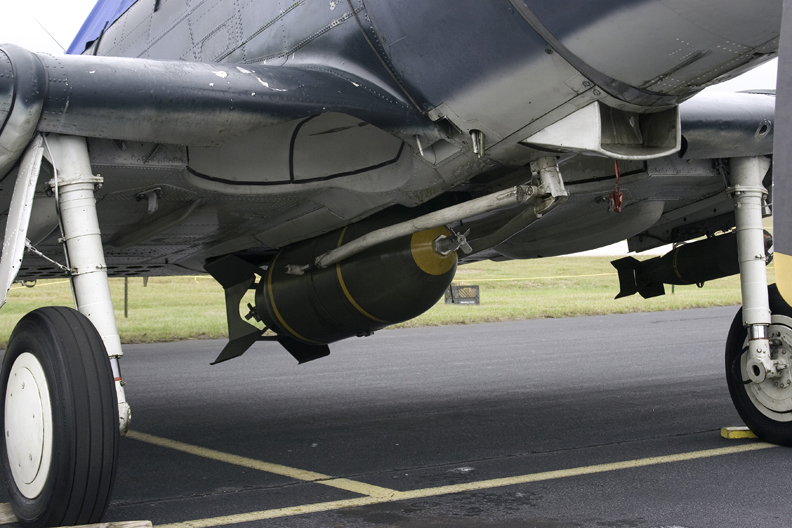
____________________________________________
9 August 2021
From: Brock Howe
Texas
I had a couple questions over the weekend that had me scratching my head about the details of SBD operations:
Bomb arming: I’m familiar with the small arming vane on the front of the bomb and how it works, but when the pilots would arm the bombs, exactly what was going on? I thought they were they pulling a pin via a linkage and cable that would allow the vane to rotate and drive the fuse in? Or was the wire for the pin attached to the airplane somehow and pulled out during the bomb drop? And following on that, when the electric arming device was introduced, what was that exactly doing? Did it just replace the mechanical linkage with an electric motor to pull the pin? And finally, I trust that once the bomb is armed, they would not land with the bomb, and they would drop it in the ocean for fear that a jolt from a hard landing might detonate it.
____________________________________________
9 August 2021
From: Barrett Tillman
Arizona
Your best bet is to find the pilot's operating manual and possibly a Navy BuOrd source on bombs.
I've seen it both ways for freeing the rotating spinner to arm a bomb: yank a handle that pulled the wire, or the weapons' weight stripped the wire on release.
I never knew how the electric arming worked but can say that manual remained a backup. That was Max Leslie's problem with premature release outbound from Yorktown. He broke radio silence telling his pilots to revert to manual. I never thought to ask him what the glitch was.
Correct: never-ever land with live ordnance.
Barrett
____________________________________________
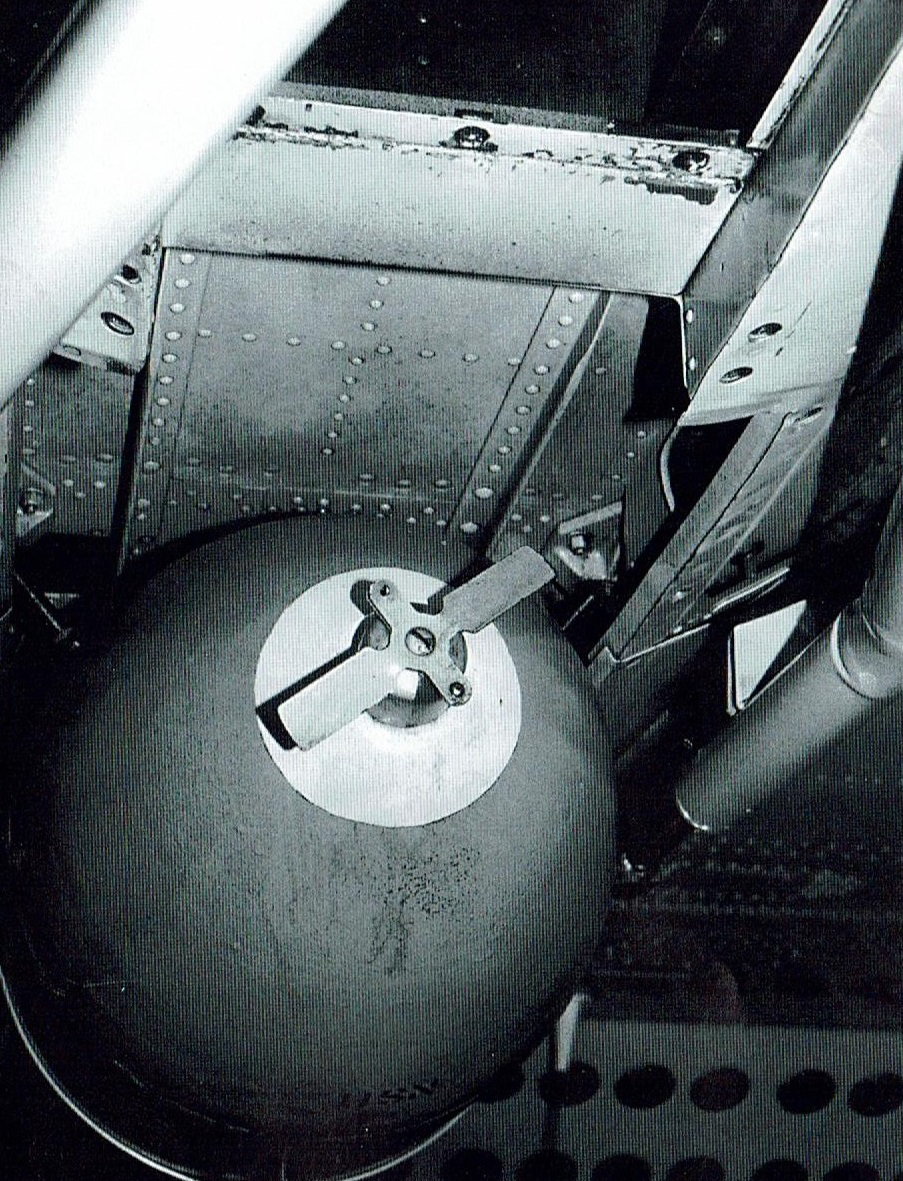
This image is from page 38 of Walk Around SBD Dauntless, by Squadron Signal Publications. It shows a close-up of the arming vane on a 500 lb. bomb. That book and others are describing a manual arming process, i.e. a wire that prevents the vane from spinning and arming the bomb until the pilot pulls it manually. Like Barrett, I was unable to find a description of the electric arming option, but since the pilot could do it either way, it had to be a mechanism for releasing the wire. The wire isn’t shown in either of these two photos.
See our October 2020 newsletter for further coverage on this subject. Thom provided some additional details about loading and arming the bomb, plus there’s another helpful photo:
click here
, then scroll down. It’s also found via the Archives menu at the top of this page.
One curiosity remains unanswered: exactly how was a wire attached to the arming vane, seen clearly in this photo, such that it prevents the propeller from spinning (and arming the bomb) in flight, but the pilot can easily pull it free? I can guess a couple of ways to get it done, but I suspect the engineers in 1940 had better ideas than me. And how about the electric arming option? That’s another tough question, since the pilot had both choices at his disposal. How would that be possible? Anyone know? —RR
"TWO CARRIERS AND MAIN BODY OF SHIPS..."
That was the opening phrase in the most important sighting report of the BOM, sent by PBY pilot Howard Ady’s aviation radioman on the morning of 4 June 1942. In last month’s newsletter we were treated to a reminder that the Battle of Midway Roundtable owes its existence in large measure to Ady’s son, Howard Ady III, who unknowingly started it all with an unrelated phone call to Bill Price around 1990.
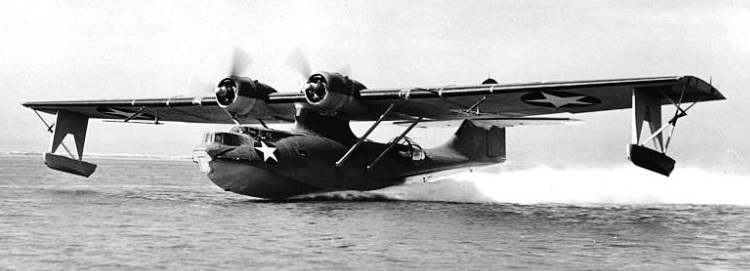
PBY5 Catalina, very similar to Lieutenant Ady’s number 23-P-5 at Midway.
Howard has generously provided an abundance of additional information about his dad, who passed away in 1998. The cemetery where the elder Ady is interred features a wall of distinctive plaques honoring its military veterans, including this one:
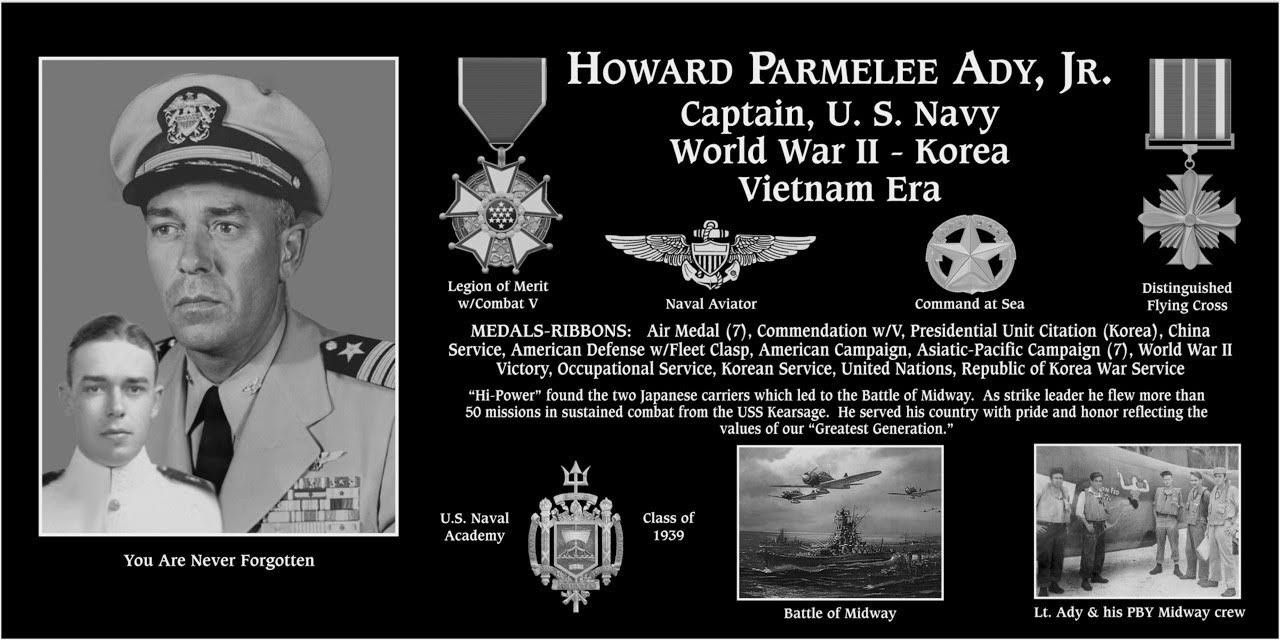
As you can see on the plaque, Captain Ady’s naval career continued far beyond Midway, including mine-laying operations against Japanese shipping while flying a PV-1 Neptune patrol bomber, as well as other assorted aircraft after the war. Note his personal nickname cited on the plaque, “Hi-Power,” originated by his Annapolis classmates due to the way he always signed his name: “H. P. Ady, Jr.”
Ady continued as a pilot during the Korean War, serving as commander of Carrier Air Group 101 aboard USS Kearsarge (CVA-33), 1952-53. You can review one of his periodic action reports during the period:
click here
. He flew F4U Corsairs and AD Skyraiders on 50 strike missions with his various squadrons off the Kearsarge.
(It’s interesting to note how many combat pilots from the BOM had to endure still more aerial combat in Korea. On the Roundtable, we know of Roy Gee of VB-8 who dodged AA fire in a Skyraider, and Clay Fisher, also VB-8, who flew Corsairs during some well-known actions over North Korea. There likely were many more.)
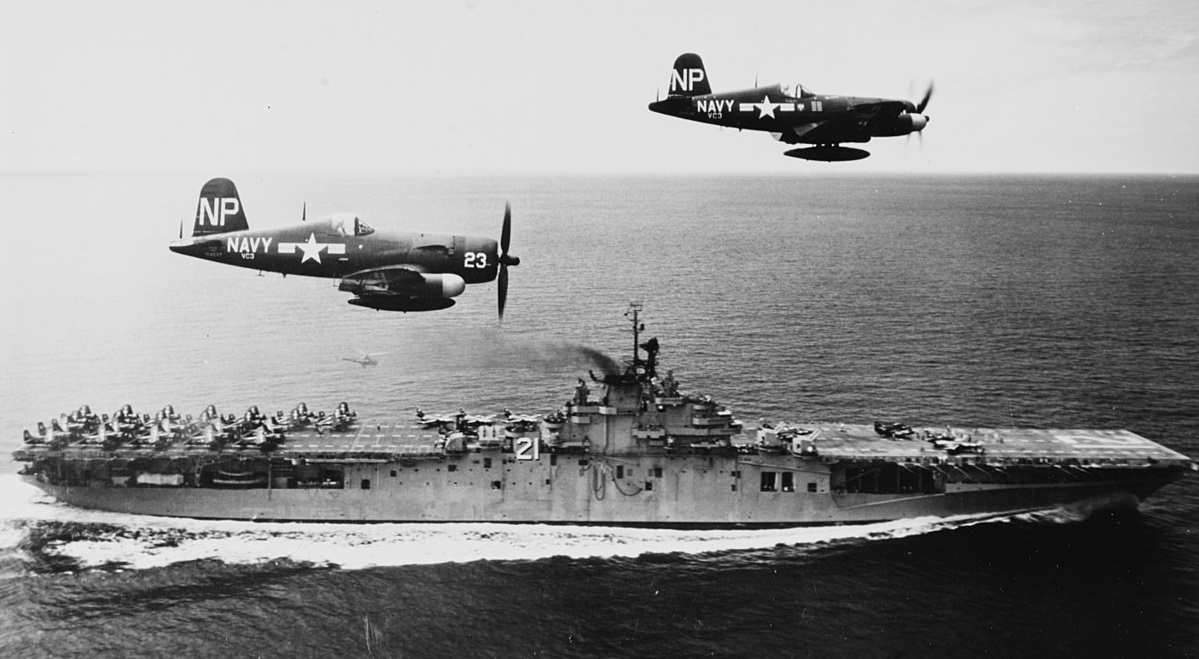
Carrier Air Group 101 Corsairs pass over USS Boxer (CVA-21) off the coast of Korea.
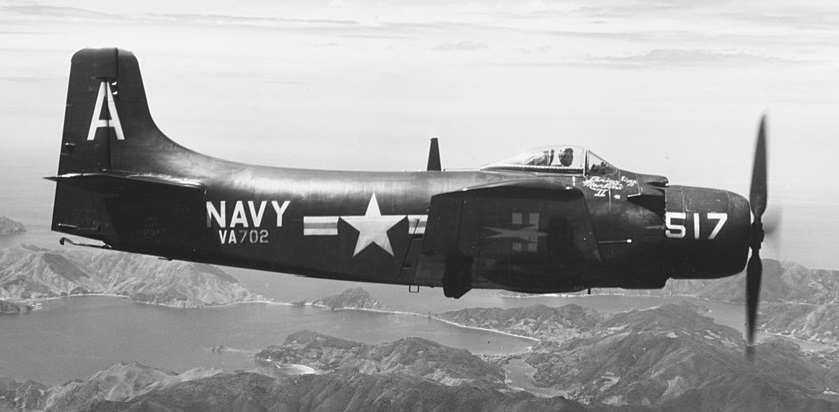
AD Skyraider from Carrier Air Group 101 over Korea.
After the Korean War, Ady went on to do a tour as executive officer of USS Hornet (CVS-12) and as C.O. of All-Weather Fighter Squadron 3 (VFAW-3) at NAS North Island, California, flying F4D Skyray jets. He completed his career in 1963 as a captain on the staff of the Commandant, 12th Naval District, in San Francisco.

F4D Skyray of VFAW-3, NAS North Island, about 1958.
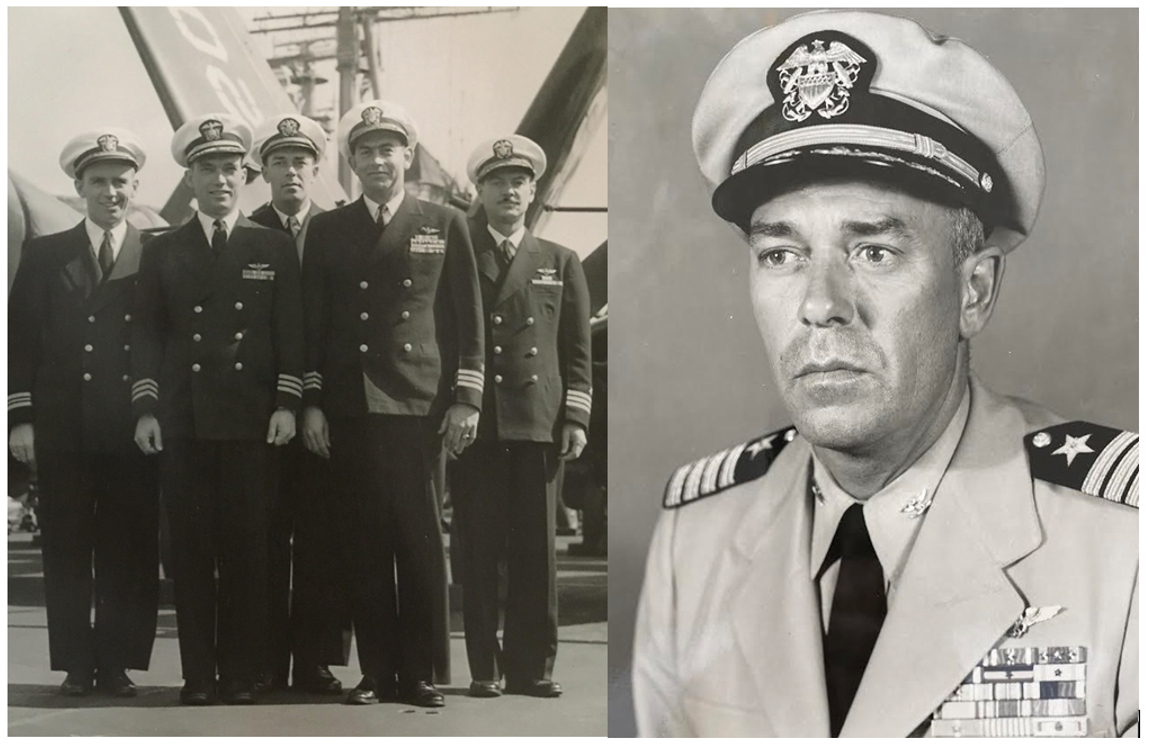
Left: Ady, back row, center, as the “CAG” (air group commander), with his squadron commanders aboard USS Kearsarge (CVA-33), 1953. Right: Ady as C.O. of VFAW-3 at NAS North Island, California, 1958.
Sincere thanks to Howard III for allowing us this opportunity to honor the memory of his father, one of the key personalities of the Battle of Midway.
—RR
THE MIDWAY AIR FLEET – BOTH SIDES
Over the years we’ve seen a great many outstanding scale models of BOM aircraft constructed by our members, one of which is showcased on the cover of No Right to Win. Everyone who has contributed his talent and sometimes significant fortune into making those realistic-looking warbirds rates a hearty Bravo Zulu from all of us who are privileged to witness their handiwork.
The latest to come to our attention was recently completed by long-time Roundtable member Tom Matlosz in Florida, who put in what is probably a record amount of time, effort, and dedication to produce a hand-crafted collection of 1:48 scale models of every aircraft that flew during the BOM on both sides!
It’s all displayed for us on an excellent interactive website where you can select each plane in turn, read its Midway history, then move on to another one:
click here
.
Note that Tom has gone the extra mile in creating these models, for they’re not simply examples of their respective types, but replicas of the actual aircraft flown by the likes of Best, Thach, Waldron, Tomonaga, and more. Here’s an example from the site, the F2A Brewster Buffalo flown by Marine Captain Philip White:
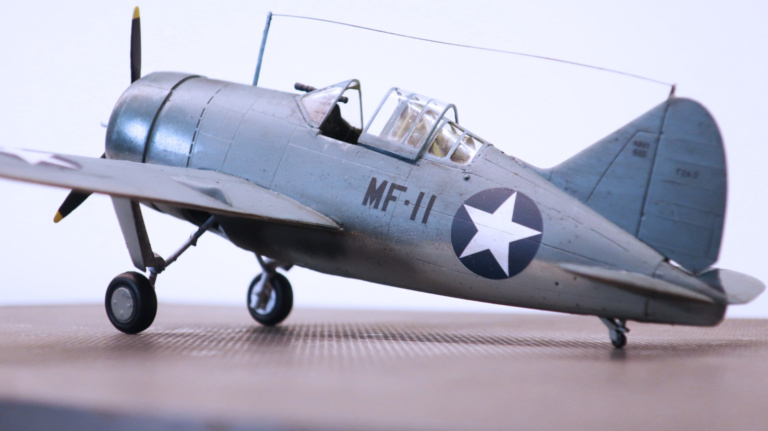
There are a total of six Japanese and eleven U.S planes in the set, and each has a story to tell. Well done, Tom!
Re: DEVASTATORS IN THE BATTLE OF MIDWAY
(See the
Aug & Sept issues
)
____________________________________________
26 September 2021
From: William Longton
Florida
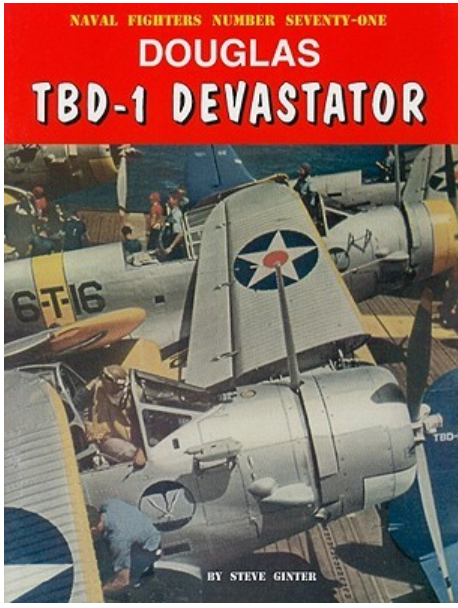 Reply to Tom Rylchik: I have seen this photo [training unit TBDs with 600-series side numbers] in Steve Ginter's book Douglas TBD-1 Devastator (Naval Fighters No.71), ISBN 1-942612-71X (2006). According to his publication, [that] photo found on page 91 is captioned as "Three TBD-1s assigned to the training command at Corpus Christi, TX in late 1942 after the Battle of Midway forced their retirement from fleet service." The photo is credited to Fred Dickey. I have found no other *specific* reference to this photo anywhere else, so I will take it at face value.
Reply to Tom Rylchik: I have seen this photo [training unit TBDs with 600-series side numbers] in Steve Ginter's book Douglas TBD-1 Devastator (Naval Fighters No.71), ISBN 1-942612-71X (2006). According to his publication, [that] photo found on page 91 is captioned as "Three TBD-1s assigned to the training command at Corpus Christi, TX in late 1942 after the Battle of Midway forced their retirement from fleet service." The photo is credited to Fred Dickey. I have found no other *specific* reference to this photo anywhere else, so I will take it at face value.
On a side note, if the TBD is your thing (as it is mine), I recommend you pick up a copy of this publication as it is spectacular in its coverage of the Devastator. Included are many rare and previously unseen photos, including a detailed cutaway oblique of the TBD-1 and a squadron specific listing of most BuNo assignments of the TBD by carrier and their fates, among other things. Something definitely worth adding to one's personal library of reference books.
____________________________________________
NEW MOGAMI PHOTO
One of the fascinating things about The Battle of Midway is that I constantly find things that I have not seen before or an account I had not read. A few days ago I was paging through some of my books while re-arranging some of them in my library, i.e. cleaning, and a picture kind of stood out to me. The book in question is one of a series of books published in Japan called Maru Special, number 10 to be exact. If anyone is familiar with the series, the issues on Japanese warships, were mostly done in the 1970's. Each volume is on a particular ship or class of ships.
A lot of the information as well as pictures of the ships one cannot find anywhere else. But it's all in Japanese which prompted me to learn to read Japanese back then. Kind of rusty now but can get by. At any rate there was a picture of the Mogami being refueled. The picture seems to have been taken from the bridge looking forward. And what do I see but a crumpled bow.
Well giving it my best shot at reading the caption I made out enough of it to see that it was Mogami being refueled by Nichiei Maru on the way back to Truk for temporary repairs after The Battle of Midway. Now I'm sure I 'read' this volume way back when but apparently never noticed the crumpled bow and maybe didn't read the caption or just forgot about it. So I found an image of the picture online. Scanning the book and getting a good copy would have required breaking the spine and I didn't want to do that if I could help it.
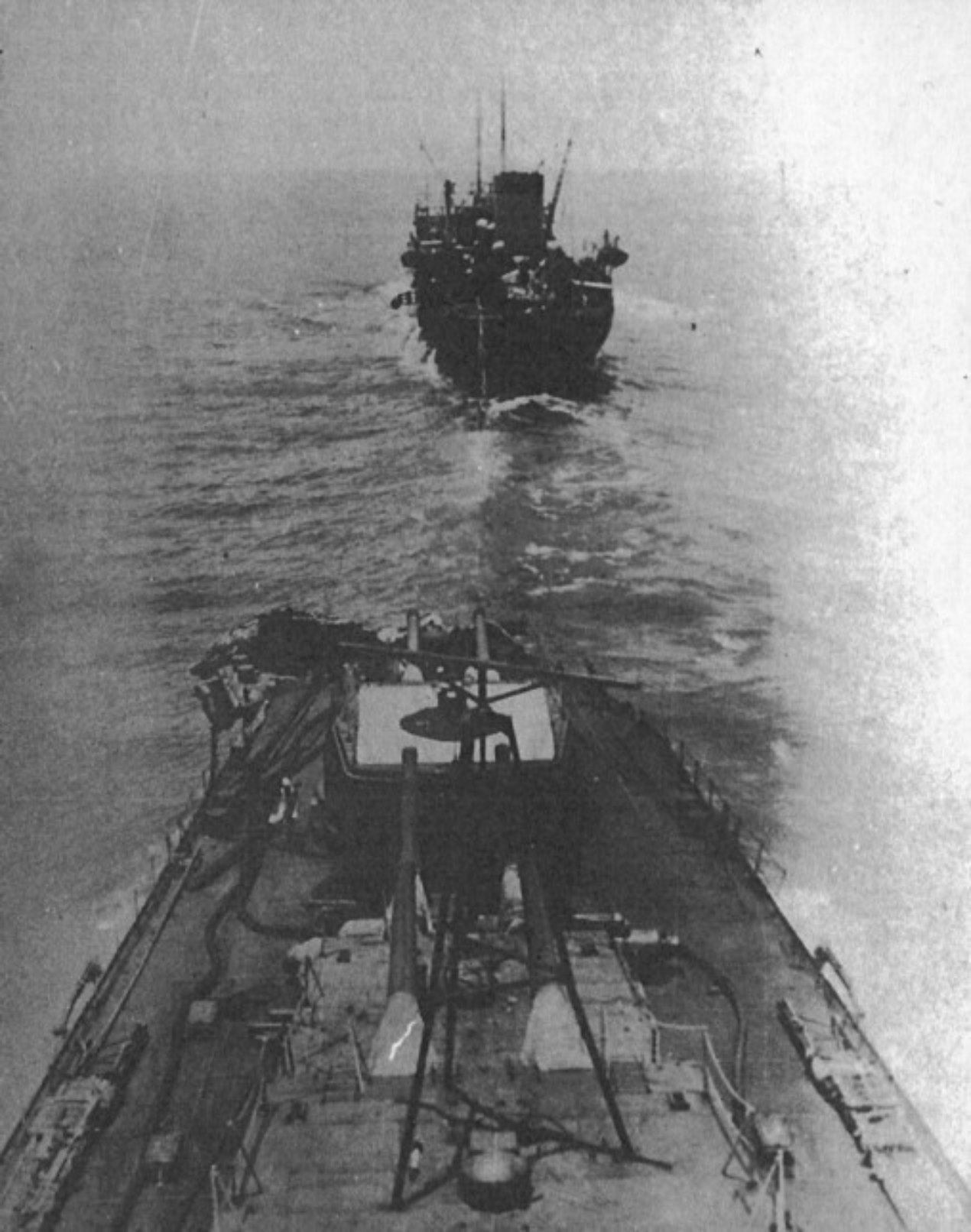
The book also has a couple more pictures of the battle damage after Mogami either arrived at Truk or possibly Japan. Looks more like it was possibly at Truk when the pictures were taken as the deck is still pretty messed up. So have had this picture in my collection for years but only by happenstance did I discover it again
—TW
Re: DAUNTLESS, THE NOVEL
(See the
September issue
)
____________________________________________
2 October 2021
From: Barrett Tillman
Arizona
(Author, Dauntless, Hellcats, Enterprise, etc.)
Another excellent issue, and not because of “Dauntless, the Novel!”
First things first: re Ron's editing. Any author within our genre could do no better than Russ both for wordsmithing and accuracy.
A bit of background: Dauntless was my third novel. The first was a 1990 thriller called Warriors, positing a Mideast air war mostly from the Saudi and US mercenary viewpoint, with F-20 Tigersharks. It did very well due to Desert Storm (timing is important).
No. 2 was a 1992 epic built around a post-Soviet alliance & invasion of South Africa with lots of war at sea. Gamers loved The Sixth Battle scenario, and I still hear from some of them.
Overlapping was Dauntless, timed for the BOM 50th anniversary. I forget specifics now, but I think I delivered c. 85-90k words in about four months. My editor asked how in the world I did that, and I explained that I'd spent 20 years and several previous books researching. Restoring and flying the world's then-only-airworthy Dauntless certainly helped.
The sequel, Hellcats, was published [in 1996]. The Korean War end of the trilogy remains uncompleted.
All the best,
BT
____________________________________________
Ed. note: Interesting footnote to the publishing of three air-sea combat books during the time of Desert Storm: Barrett was accused by a TV entertainment reporter of “war profiteering.” His response was “I certainly hope so!”
Meanwhile, for those who followed up on my recommendation for Dauntless in the September issue, here’s another for Hellcats. It’s much more about the same set of characters on both sides, and if you’re like me, you’re going to want to know what’s in store for them post-BOM. —RR
MORE COMMENTS ABOUT THE SEPTEMBER ISSUE
____________________________________________
2 October 2021
From: Andries Visser
Republic of South Africa
Thanks Thom; great, as usual.
Regards,
Andries
____________________________________________
4 October 2021
From: Jack Federhofer
Missouri
PDF format is great! It allows me to download and read at leisure and reduces your bandwidth, which should save costs somewhere along the line.
Jack Federhofer
____________________________________________
A sincere thank you goes to everyone who takes the time to send in messages like these; we appreciate it very much. It’s very helpful to know your opinions on the newsletter and the website—major or minor, pro or con.
If you haven’t yet checked out the new PDF version of the newsletter, please give it a look at least once and let us know what you think, whether good or not. (If you’re reading this via the usual web version, scroll to the top and click the link on the left: “Download the newsletter in PDF.”) We’re still evaluating whether the effort required to produce a second version each month provides a desirable advantage for our members.
In any case, your incoming messages are most welcome, whether you have a brief comment like those above, a probing question, or a significant composition on a BOM-related topic—it’s all good and has been the reason for our success since Day One. Keep them coming, and we’ll do it all again in November.
|